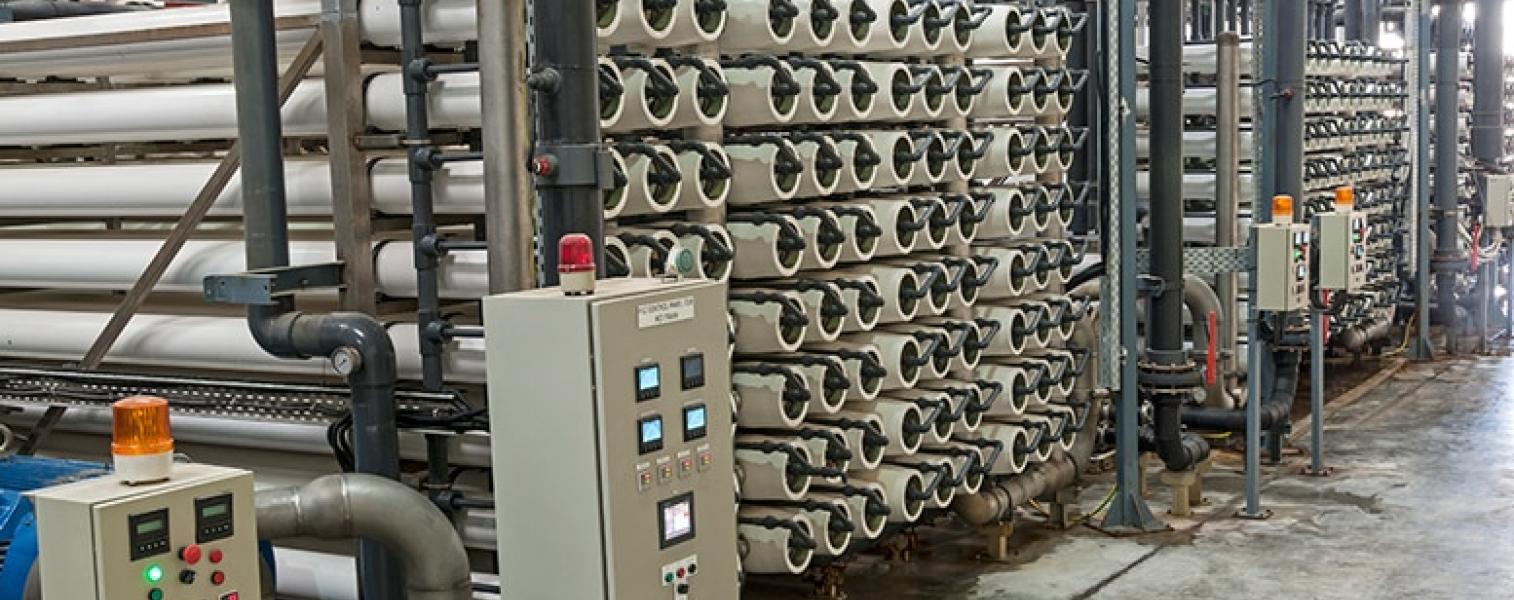Automated RO Goes Above and Beyond Traditional Filtration
Reverse osmosis (RO) is one of the most common, trusted methods in water treatment and can be effective for many wastewater applications, allowing facilities to recover water, save time and improve productivity. The process works by forcing water through a membrane that removes contaminants on a molecular level.
By allowing a PLC to make the RO operational decisions, automated reverse osmosis (ARO) addresses the few shortcomings that prevent traditional RO from reaching its full potential. This article will describe the ways ARO can offer your facility greater wastewater treatment value than traditional RO, including:
- Less operator attention required
- Lower chance of membrane damage
- Maximum water recovery with minimal effort.
The Issues with Traditional RO
A traditional RO system has two primary flaws:
- It can’t adjust to changing concentration levels common in wastewater treatment.
- High contaminant concentrations may produce scaling and damage the membranes, requiring their costly replacement.
Because of traditional RO’s inflexibility, many facilities are unable to optimize their systems. In the rare instance of treating a wastewater stream of uniform concentrations, RO membranes can be set to accommodate that one level and function optimally. Unfortunately, that is almost never the case. Wastewater concentration can vary greatly over the course of a day – it might start high, decrease in the middle of the day and increase again at the end, or the opposite. Optimizing an RO membrane, therefore, requires an operator to continuously adjust the system to match the wastewater stream. More commonly, the RO is set to treat the highest expected concentration and is simply less efficient (producing lower water recovery than optimal) if concentrations fall.
That beats the alternative, however: treating a highly-concentrated stream with a membrane that isn’t set up for it. When that happens, the membrane can scale and sustain critical damage that will require replacement. Some RO systems might have 18 or more large pressure vessels containing membranes, with membranes in each vessel costing thousands of dollars. Even after training and paying an operator to watch the system, one lapse can have costly consequences. By reducing scaling, ARO can double or triple your membrane life.
Automated RO Simplifies the Process
If your system suffers from the headaches, inefficiency and costs involved in maintaining a traditional RO system, please consider ARO to simplify your wastewater treatment needs. Water recycle projects typically have the most to gain through automated RO, but numerous other industries and applications can also benefit.
ARO really means “setting it and forgetting it.” An ARO system senses the incoming wastewater concentration and adjusts the system (reject flow rate, recycle flow rate and feed pressure) accordingly. ARO can be hugely advantageous for wastewater streams that change quickly and drastically. Not only does it preserve membranes, it also provides better water recovery – which is probably why you considered an RO system in the first place. In one example, recovery was improved from 80% to 90%, which cut the reject volume in half!
ARO can also work together with traditional RO. In some cases, reject water from ARO can be sent to a traditional RO for additional treatment. It may be less costly to use traditional RO for a low-volume second stage, where feed concentrations will be relatively constant.
Converting a traditional RO system to ARO simply requires a PLC, variable-frequency drives and automating your instrumentation. To learn if an automated RO system is the right technology for your wastewater treatment needs, contact MacDermid Envio and speak with one of our wastewater experts.
